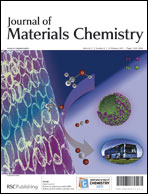Phase evolution of perovskite LaNiO3 nanofibers for supercapacitor application and p-type gas sensing properties of LaOCl–NiO composite nanofibers
Abstract
This study reports the fabrication and characterization of LaOCl–NiO composite and LaNiO3 nanofiber mats and their potential applications for p-type gas sensors and electrochemical capacitors. One-dimensional LaOCl–NiO composite and LaNiO3 fibers were prepared via the electrospinning of LaNiO3 precursor/poly(vinyl acetate) composite fibers followed by subsequent thermal


 Please wait while we load your content...
Please wait while we load your content...